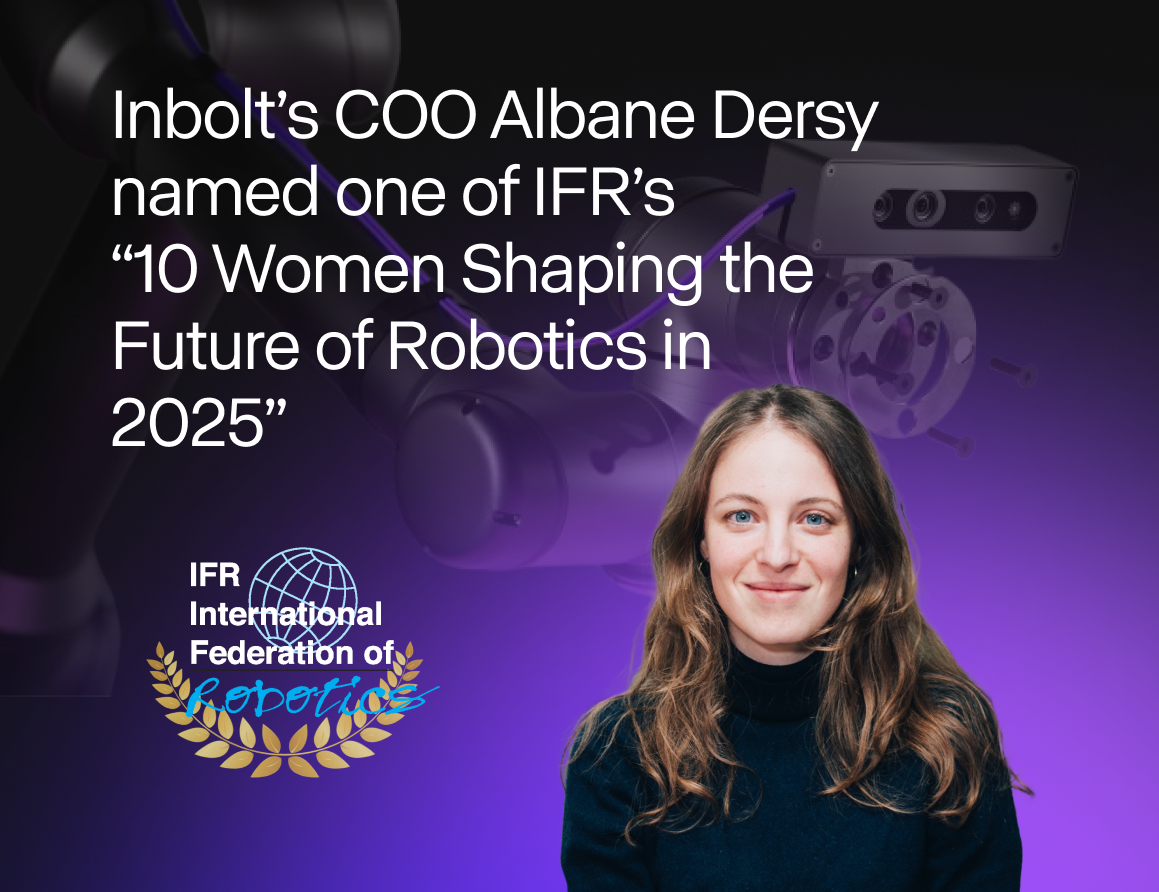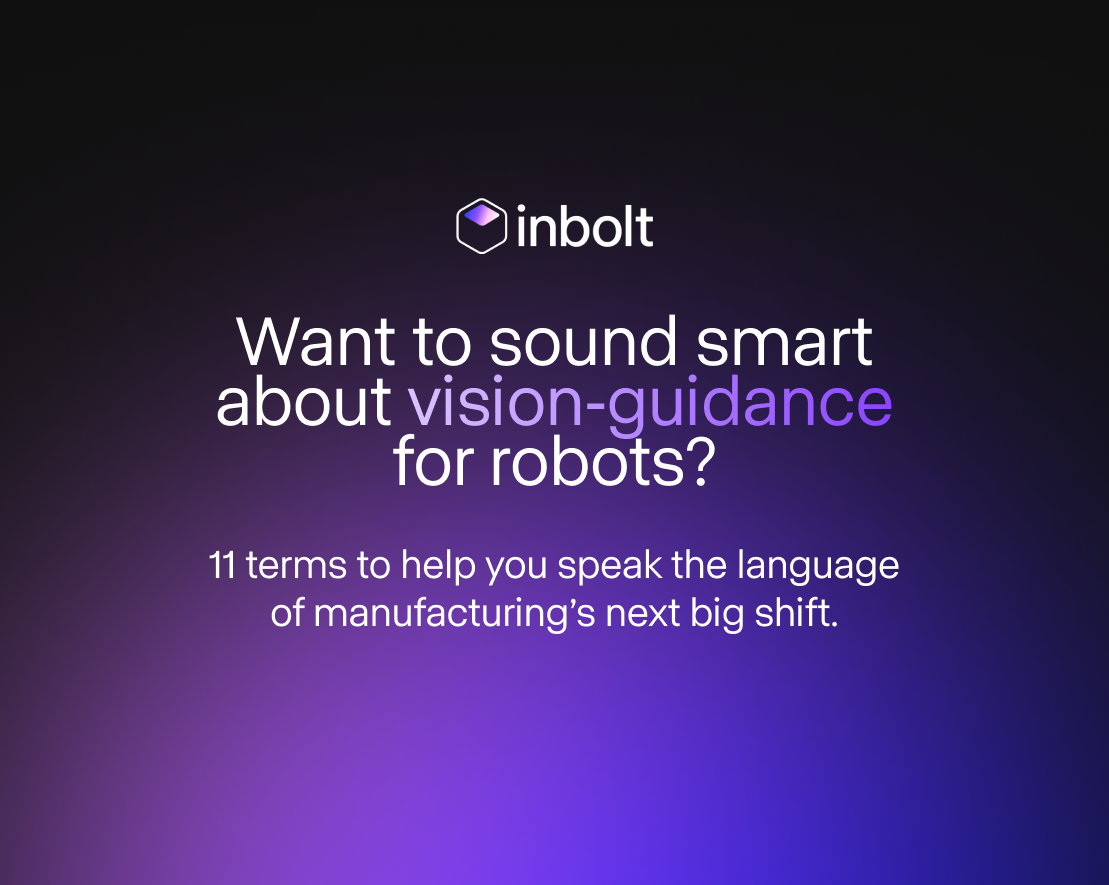Pioneering Visionaries: Zivid and Inbolt's Perspectives on 3D Vision
This interview delves into Zivid's 3D vision technology, spotlighting its role in boosting Inbolt's GuideNOW High Precision system for precise small part localization.
Technology Insights and Market Differentiation
INBOLT : Could you walk us through the unique features and capabilities of your technology? How do they differentiate from other solutions in the market?
ZIVID : 3D vision has been solved in a variety of ways with stereo camera, active stereo, time of light, and structured light for some examples. The demands on these cameras are as varied as there are applications. At Zivid our goal is focusing on providing a pure play camera that can provide high fidelity point clouds across as many of these cameras as possible, a swiss army knife type of device.
Zivid cameras are temporal structured light cameras that create highly precise point clouds with submillimeter accuracy. What truly distinguishes our cameras is their exceptional performance across a wide range of scenarios, enabling imaging of diverse materials, from dark absorbent surfaces to shiny reflective metals, with unparalleled clarity. This is enabled by Zivid’s patented 3D HDR technology.
An unique aspect of our imaging capabilities is the Zivid Omni-Engine, designed specifically to capture translucent and transparent items. This innovation grants our customers unprecedented completeness and accuracy in imaging such materials, enabling a previously challenging tasks such as order picking or handling clear plastic items. With the Zivid omni engine it is now possible to see, and capture anything in the scene: diffused, reflective, transparent, translucent, absorbent and shiny items all in the same scene.
Innovation and Industry Trends
INBOLT : How do you approach innovation within your product development processes?
ZIVID : When we identified the need for capturing 3D data on transparent objects in eCommerce and intra-logistics, we saw it as an opportunity rather than a barrier. Despite the taboo surrounding transparency in 3D imaging, we embraced the challenge with determination. This is the mindset we use across our entire organization, doing our best to make what feels impossible, possible.
INBOLT : Are there new markets or applications you’re interested in exploring?
ZIVID : Our exploration of new markets and applications is guided by a customer-centric approach and a commitment to innovation. We prioritize customer feedback and strive for our products to not only meet but exceed expectations. Our goal is to always keep our customers in the loop when we develop features they care about, since they are our best validation of progress. This tight feedback loop allows us to continuously improve and remain relevant in an ever-evolving landscape.
While we're not aiming to be the biggest or the most inexpensive company, our integrity lies in our dedication to providing revolutionary technology that addresses our customers' most pressing challenges. We embrace a Norwegian mindset of problem-solving and innovation and take on what is critical to helping the success of our customers. We believe that by prioritizing our customers' success, we simultaneously drive Zivid forward in our pursuit to innovate and enhance our products and user experience.
Our cross-functional development approach, leveraging diverse backgrounds and keeping developers closely involved with customers, ensures that we maintain this customer-first perspective.
Client Engagement and Case Studies
INBOLT : Could you provide examples of successful deployments of your technology and the impact it had on your clients’ operations?
ZIVID : One of our latest deployments happened through our customer Siemens. Last year, Mecalux launched a robotic order picking system utilizing Siemens' SIMATIC Robot Pick AI technology, which employs deep learning algorithms for automating the picking process and 3D vision. We are very proud of this achievement as it paves the way forward for order fulfilment and intra-logistics.
Innodura’s solution with SIDASA engineering is another example creating a solution that can adapt to an ever-changing environment. Having 3D vision for a robotic system allows a level of complexity handling that is not possible for rigidly planned systems, end of story.
INBOLT : In what ways do you work with your customers to ensure the successful integration and utilization of your 3D cameras?
ZIVID : As we discussed before, Zivid takes a “customer-first” approach, and this also shines through in our customer service mentality. If a customer buys a camera, a development unit or just gets a loan to test we have streamlined access available to one of our applications engineers.
On the other side of this equation, we work hard to maintain a high-quality knowledge base, so if you don’t want to talk to us, you really don’t have to. All the information that we can think of we do our best to document online as well. To support this knowledge, we also provide a plethora of code samples on Github that cover the software languages we support.
We believe in following our customers through all stages of their development and into deployment as well. We continue to support our customers throughout the lifetime of their projects since our cameras are expected to run for many years.
Collaborative Vision and Future Prospects
INBOLT : What are some of the benefits of GuideNOW High Precision?
ZIVID : GuideNOW is an impressive application that takes advantage of the benefits of robot-mounted 3D camera solutions. When you mount your 3D camera onto your robot you have just given your robot the freedom to see anything within its reach. Now it can look at multiple scenes in its working area, or the same scene from multiple angles, which is the cornerstone of robot guidance applications. Zivid 2+ cameras are small robust packages perfectly suited for robot mounted applications. Being able to see from any angle and use that data is exactly what GuideNOW does.
Additionally, we really like that GuideNOW is such a flexible system. Anyone can set up the system and new workpiece references in less than 30 minutes using the built-in CAD model-based programming software, GuideNOW Studio. The technology enhances robotic installation flexibility by reducing the need for custom tooling, allowing for fast production changeovers and reduced tooling costs. Ease-of-use is important for us at Zivid.
We are super happy to be part of your robot guidance solution with the Zivid 2+ M60! We would like this great collaboration to bring us to deployment with an inbolt’s customer in the near future.
INBOLT : What challenges are you currently focusing on overcoming, and how do you see your technology evolving in the next 5 years?
ZIVID : As we look ahead, we are committed to addressing two main challenges: making our cameras more affordable and user-friendly. In the next five years, our focus is on striking a balance between capability, productivity, and affordability. Our goal is to ensure that high-quality point clouds are accessible to a wider range of applications and budgets without compromising performance.
Our cameras are engineered for safety and robustness, with IP65 rating for industrial-grade durability. We test our cameras to verify we can deliver high quality point cloud in situations that have strong vibrations, accelerations, and temperature variations. We perform extensive testing and qualification to guarantee we can meet our customers needs across any application.
Zivid's New Additions and Projects
ZIVID : And you recently added the Zivid to your 3D camera arsenal, can you tell us a little bit about your journey?
INBOLT : It's true, we have expanded our toolkit by integrating the Zivid camera to our portfolio. Initially, the release of GuideNOW Real Time with the Realsense camera provided an accessible entry point into 3D imaging due to its affordability, good documentation, community support, and decent point cloud quality for various applications. However, we encountered limitations regarding its precision, particularly with challenging scenarios involving small, thin, or highly reflective components.
The introduction of a structured light camera like the Zivid 2+ M60 significantly enhanced our point cloud accuracy, allowing us to broaden our application spectrum and address new use cases. When we created GuideNOW, we always knew we wanted to be able to respond to as many manufacturing use cases as possible. Having GuideNOW Real Time for our dynamic real time processes, and GuideNOW High Precision for our static, small and precise processes allows us to do that. Both complement our ability to locate the position and orientation of a part by comparing its CAD model to the 3D data from the camera.
Favorite Features and Project Impacts
ZIVID : What is your favorite feature about Zivid 2+ M60?
INBOLT : The standout feature for us is undoubtedly its accuracy. Our enthusiasm stems from the balance we aim to achieve between speed, cost-effectiveness, and precision in 3D imaging. The Zivid 2+ M60 enables us to capture detailed and reliable data faster and more affordably than we thought possible. It’s a camera that empowers our vision.
The ideal scenario for us would involve the rapid frame rate and affordability of the Realsense camera, alongside the superior point cloud accuracy and quality that Zivid offers. This isn’t a viable option at the moment, but we’re excited to see what the future brings.
ZIVID : What projects have you been able to unlock with GuideNOW High Precision?
INBOLT : GuideNOW High Precision has allowed us to venture into more sophisticated projects, particularly those that necessitate precise 3D imaging.
Our primary focus has been on bin-picking applications, where the superior point cloud quality of Zivid significantly contributes to more effective object recognition and manipulation in the use cases we’ve been working on. Zivid's heightened precision is particularly beneficial for identifying and handling smaller objects, those with dimensions less than 10x10x10 cm, a domain where we anticipate developing specific projects for in the future.
The enhanced point cloud accuracy has enabled more repeatable processes in some of our pilot projects, achieving accuracies under 0.5mm. And while still in the exploratory phase, we have noticed promising improvements in localizing reflective components.
This integration represents an extension rather than a transition, as GuideNOW Real Time continues to excel in scenarios currently unsuitable for our High Precision applications, such as dynamic processes on moving lines. Our goal has always been to be able to create a vision system for industrial robots that enables robust real time decision making for any type of environment. We’d really love to offer dynamic high precision in the future!
Targeted Industries and Applications
INBOLT : What are the primary industries and applications you’re targeting?
ZIVID : We target a diverse range of industries and applications, and now with the omni-engine we want to place particular emphasis on piece picking for order fulfillment and intra-logistics. The diversity of items we can provide complete point clouds on makes our camera an ideal solution for these scenarios.
Additionally, we cater to robot guidance applications for tasks such as welding, surface finishing and assembly. Robot-mounted cameras play a crucial role in achieving flexibility and executing complex tasks with precision and efficiency. By empowering robots with human like vision, we drive productivity and innovation across industries.
Answers by Øyvind Theie, VP of Products at Zivid
Answers by Louis Dumas, CTO at Inbolt
Last news & events about inbolt

Articles
Albane Dersy named one of “10 women shaping the future of robotics in 2025”
The International Federation of Robotics has recognized Albane Dersy, co-founder and COO of Inbolt, as one of the “10 Women Shaping the Future of Robotics 2025.” At a time when manufacturers are racing to automate, Albane’s leadership stands out for bringing flexibility and intelligence to robotics on a global scale. This article explores her career, the impact of her work with Inbolt, and the leadership lessons she shares with the next generation of innovators.

Articles
Inbolt Joins NVIDIA Inception to Accelerate AI-Driven Automation
Inbolt joins the NVIDIA Inception program to boost its AI-driven automation solutions. This partnership provides access to exclusive resources, accelerating Inbolt’s mission to enhance real-time 3D vision for robots in manufacturing.
